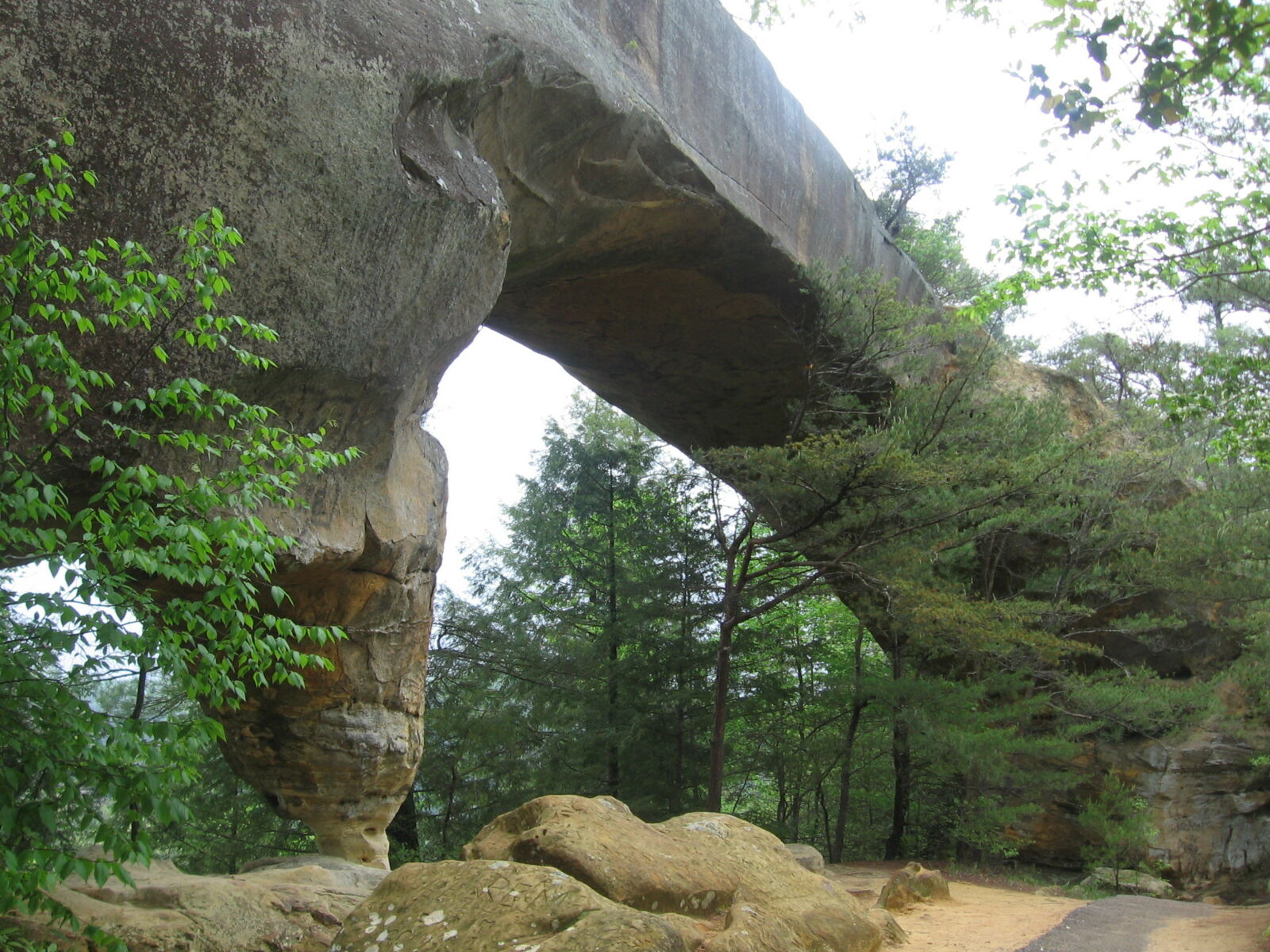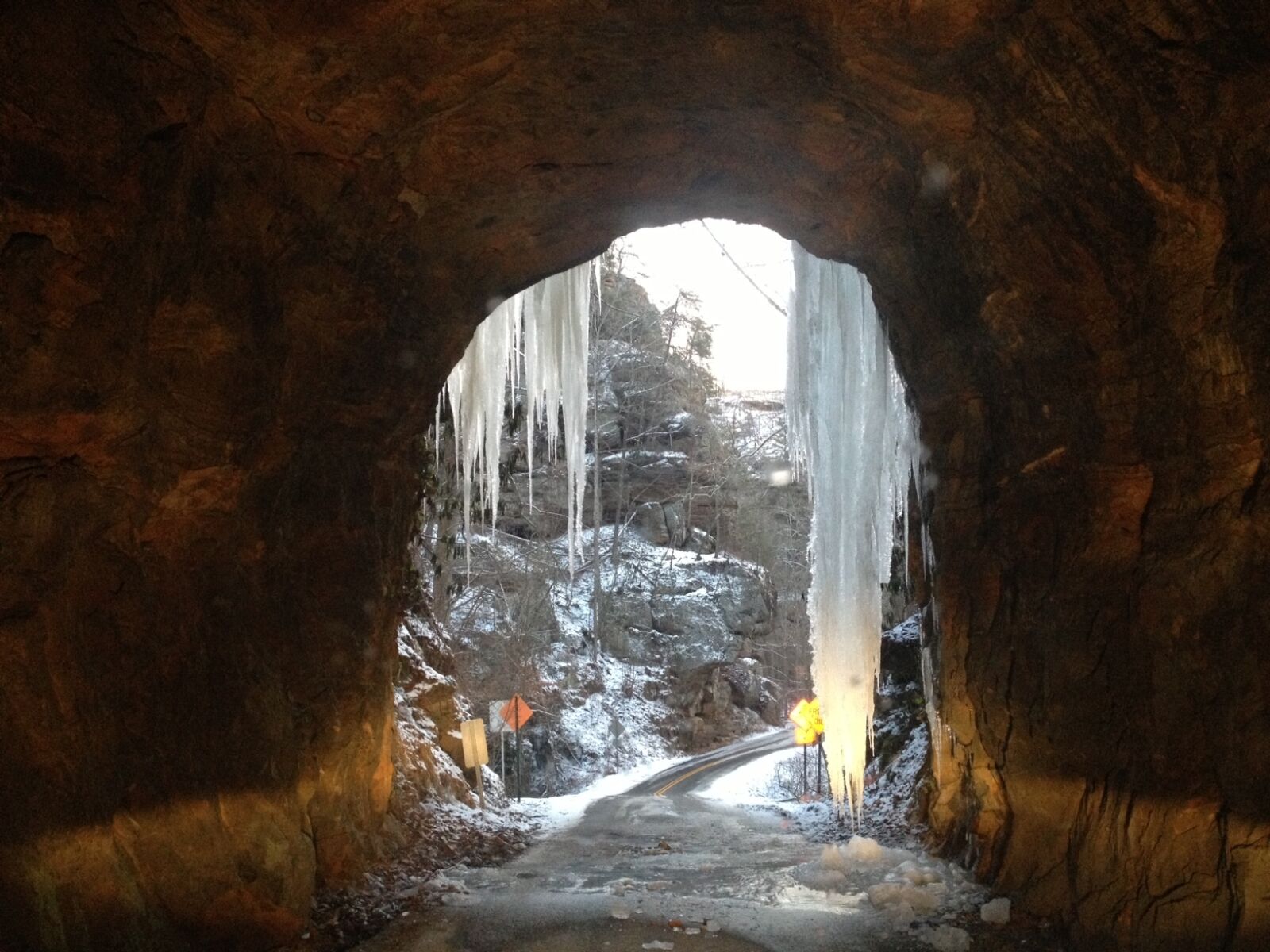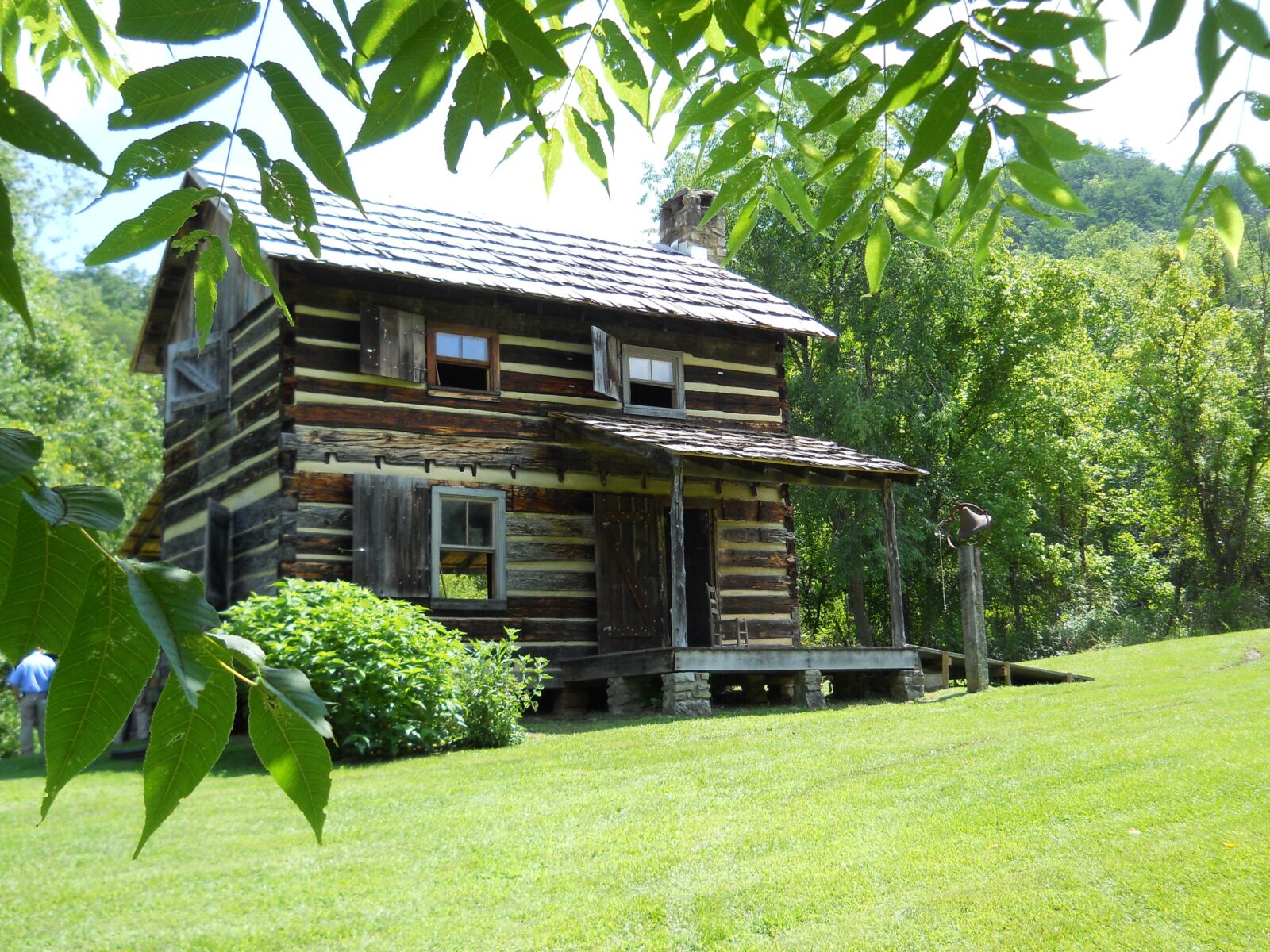Nestled in the heart of the Daniel Boone National Forest, the Red River Gorge attracts thousands of outdoor recreation enthusiasts year round. Rock climbers, hikers, canoeists and campers are among those who come to enjoy and explore this rugged landscape, often referred to as simply “The Red” by its most frequent visitors.
Across its steep terrain, miles of towering cliffs line the upper slopes of forested ridges. Along the cliffs, unique rock formations randomly appear as huge monuments withstanding the test of time. Artfully sculpted by wind and water over millions of years, more than 100 sandstone arches and other natural rock features are formed as part of this geographic masterpiece. Chimney Top Rock, Half Moon, and Sky Bridge are just a few of Mother Nature’s most impressive creations that you’ll find here.
In the valleys below, boulder-strewn creeks and streams flow through densely shaded coves of hemlock and rhododendron, eventually reaching their destiny as part of the scenic Red River. These cool, clear waters support a diverse array of aquatic species, as well as sport fish for anglers. In its swift upper reaches, paddlers find challenging stretches of Class I to III whitewater rapids to test their skill.

The scenery alone is enough reason to visit this remote and remarkable place, but a spellbinding sense of adventure seems to be what draws people back again and again. Their secluded journey takes them to a place that feels untamed and untouched by modern progression.
National recognitions worth noting
In recognition of its geological, biological and cultural significance, the Red River Gorge is bestowed with several national designations. More than 41,000 acres are designated as a National Archaeological District and listed on the National Register of Historic Places. This area contains the largest concentration of rock shelters in eastern North America and provides some of the earliest evidence of plant domestication by Native Americans.
Within the archaeological district, 29,000 acres are designated as a National Natural Landmark and National Geological Area where cliffs soar up to 200 feet high with an abundance of rock shelters, waterfalls and natural arches. Within the geological area, 13,000 acres are also designated as Clifty Wilderness, adding further protection to some of Kentucky’s rarest flora and fauna. The white-haired goldenrod specifically is endemic to the Red River Gorge, occurring nowhere else in the world.
After years of environmental protests and political wrangling during the 1960s and 70s, the proposed construction of a dam along the Red River was eventually thwarted, but the final nail in the dam’s coffin came in 1993 when a 20-mile stretch was federally designated as a National Wild and Scenic River. Upper portions of the river are also designated by the state as a Kentucky Wild River.
Forty-six miles of road through the gorge are part of the Red River Gorge National Scenic Byway. The fall season is one of the best times of year to capture the area’s breathtaking views.
Nada Tunnel, the Gateway to the Gorge
Everyone’s favorite route into the Red River Gorge is through the historic Nada Tunnel. This 900-ft. tunnel was developed in the early 1900s for hauling timber from the gorge by railway. Using dynamite, steam drills and hand tools, the tunnel took nearly one year to construct. Once complete, steam locomotives hauled logs from the gorge to a sawmill 15 miles away.

More than a century later, the railroad tracks are gone and the forest has regenerated with mature trees and lush vegetation. Nada Tunnel is now paved as a one-lane section of state highway. The tunnel is also listed on the National Register of Historic Places.
Gladie Visitor Center
Once you’re in the gorge, you can learn about the area’s geology, wildlife and cultural heritage at the National Forest Visitor center located at the mouth of Gladie Creek. Interpretive exhibits provide a glimpse into the past and convey the wild, natural beauty that visitors seek. Information about trails, camping and other activities are also available at the center.

The nearby Gladie Cabin is a reconstructed log home that represents how early Appalachian settlers lived in this area during the late 1800s. Many families once lived in this historic community that had a school, store and cemetery.
If you’re ever in this neck of the woods, be sure to stop in and sit for a spell. You’ll be glad you did, and you’ll want to come back, I guarantee.
About the Area
The Daniel Boone National Forest manages one developed campground and nearly 70 miles of system trails that transect throughout the gorge, including a portion of the Sheltowee Trace National Recreation Trail. Most trails in the gorge are considered strenuous due to steep terrain. Dispersed camping is allowed 300 feet away from roads and trails and 100 feet away from rock shelters. Click here to learn more.

